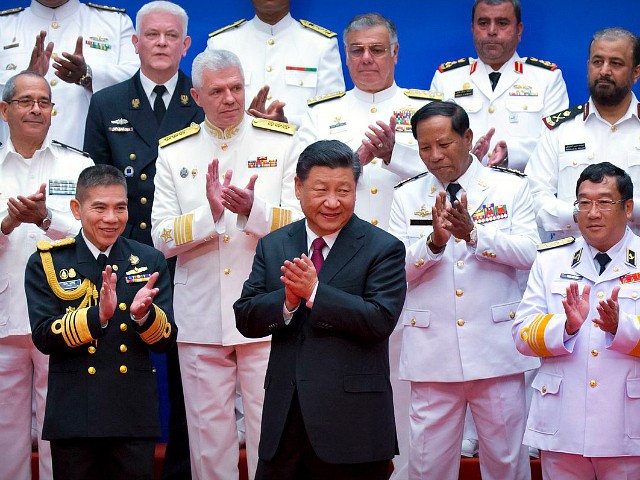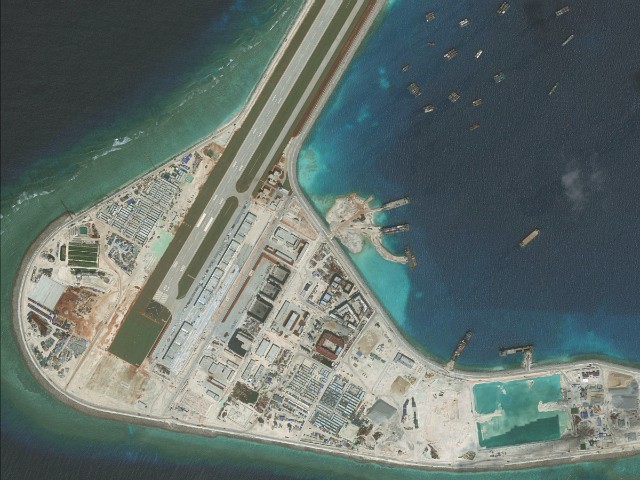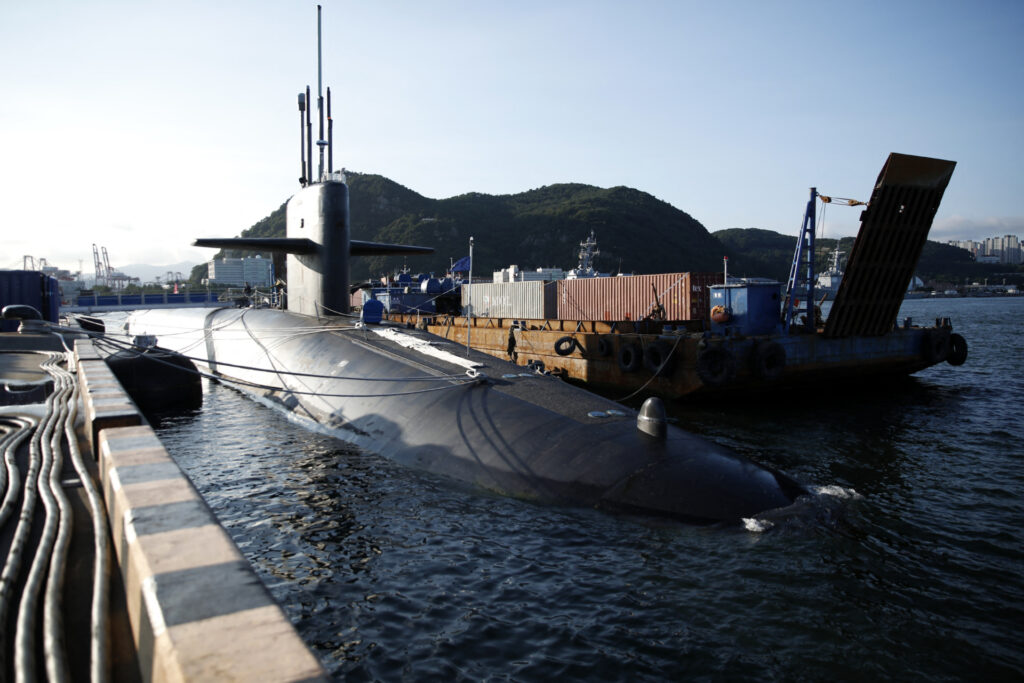The Wall Street Journal (WSJ) on Monday published a gloomy report warning that the U.S. Navy is losing its competitive edge in submarine warfare to China, which went from creaky, noisy, slow-moving subs to ultra-quiet nuclear-powered attack vehicles in less than 20 years.
The People’s Liberation Army Navy (PLAN) has greatly narrowed the submarine warfare gap, which could spell big trouble for U.S. plans to defend Taiwan with submarines.
Two particularly troubling events took place in 2023. First, satellite photos showed China putting together the hull for a new sub that would be dramatically larger than any previous PLAN undersea vessel, and then China field-tested a nuclear sub using the same quiet hydrojet propulsion system American subs employ.
Hydrojet or “pump-jet” technology is the next step beyond noisy propellers, which tend to be the greatest source of noise from underwater vehicles. Propeller technology has evolved tremendously over the last few generations of subs, but hydrojets are even more silent, efficient, durable, more functional in shallow water, and best of all, less prone to cavitation.

Chinese President Xi Jinping, front row center, and foreign naval officials applaud after a group photo during an event to commemorate the 70th anniversary of the Chinese People’s Liberation Army (PLA) Navy in Qingdao in eastern China’s Shandong Province, Tuesday, April 23, 2019. (AP Photo/Mark Schiefelbein, Pool)
Cavitation, whereby water boils into bubbles under high pressure at low temperatures, is among the greatest threats facing stealthy submariners. It is the undersea equivalent of stepping on a sheet of bubble wrap while attempting to sneak past guards.
If China can produce big submarines with pump-jet propulsion, it will have entered the same era of undersea warfare as the U.S. Navy. The Chinese are also reportedly beefing up their anti-sub defenses, including a vast network of sensors deployed in the South China Sea that has inevitably become known as the “Underwater Great Wall,” plus more sophisticated tactics for using aircraft in anti-submarine warfare (ASW).
China’s string of fortified islands in the South China Sea would make excellent platforms for ASW planes and helicopters — and unlike ships that carry such aircraft, islands cannot be sunk with torpedoes by hard-pressed sub commanders. China’s rapidly expanding surface fleet is well-provisioned with submarine detection systems, as well.

DigitalGlobe imagery (Closeup-3) of the Subi Reef in the South China Sea, a part of the Spratly Islands group. Photo DigitalGlobe via Getty Images. (DigitalGlobe via Getty Images)
China demonstrated its enhanced ASW capabilities in an August naval exercise, right after conducting joint ASW drills with the experienced Russian navy. Those demonstrations were evidently very convincing to worried American and European defense analysts, whose Taiwan defense scenarios usually envision American subs picking off enough Chinese ships to slow or thwart an invasion. Some analysts told the WSJ that China may now be capable of hunting and destroying foreign subs before they could enter the Taiwanese battlespace.
China is also getting closer to the missile and submarine technology it needs to pose a severe threat of striking American ground targets with sub-launched weapons. Former U.S. Navy officer Christopher Carlson told the WSJ that China’s sub fleet is now roughly on par with the Russian fleet of the 1990s, and that fleet was plenty dangerous. If Moscow decides to share more top-shelf sub technology with its good friends in Beijing, the Chinese threat could grow even worse.

U.S. ballistic missile submarine USS Kentucky is anchored at Busan Naval Base in Busan on July 19, 2023. (WOOHAE CHO/POOL/AFP via Getty Images)
The good news is that American subs are still at least a full generation ahead of China’s. The bad news is that China does not need to achieve technological parity to become a major threat, especially when it has the “home court advantage” of operating subs in nearby theaters like the South China Sea.
The Chinese could also build enough last-generation subs to overwhelm American ASW resources, which are stretched thin over vast oceans. Carlson noted the U.S. Navy currently operates far more top-of-the-line nuclear subs, but it is not inconceivable that China could triple the U.S. submarine production rate within a decade.
Defense News in August suggested the U.S. Navy might need to rethink submarine warfare to retain its edge, perhaps by doing the last thing old-school submariners ever wanted to do: going loud.
In other words, instead of fighting a losing battle to maintain a full-generation edge in stealth, the U.S. should develop undersea drones, decoys, and other active countermeasures to “suppress or confuse the sensors China or Russia will depend on for undersea detection and targeting.” Such a strategy could be enhanced by collecting extensive intelligence on adversary sensor networks in advance, and by developing better systems to intercept torpedoes and mines, allowing American sub commanders to stand and fight when they cannot evade.

COMMENTS
Please let us know if you're having issues with commenting.